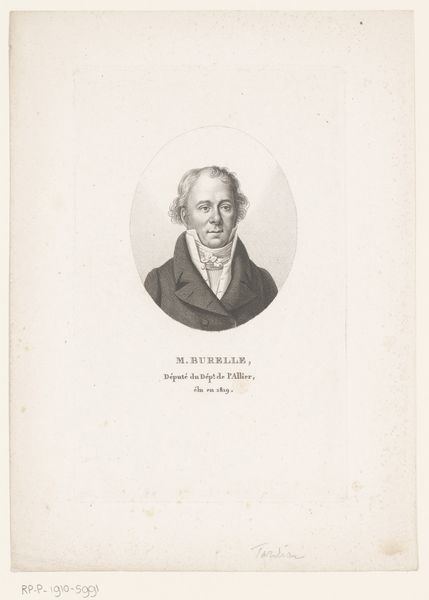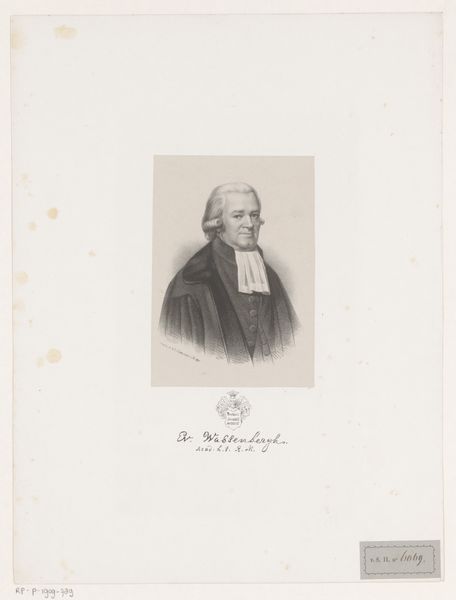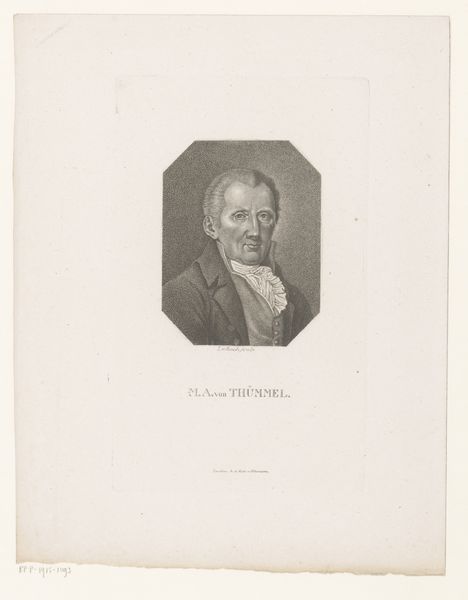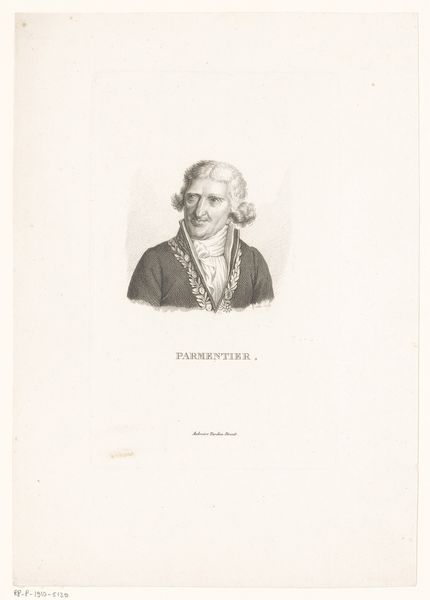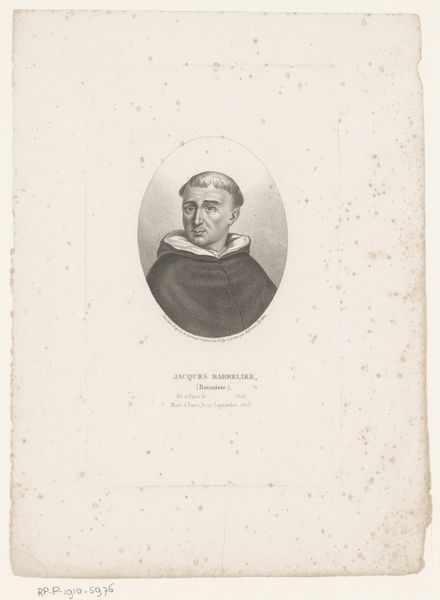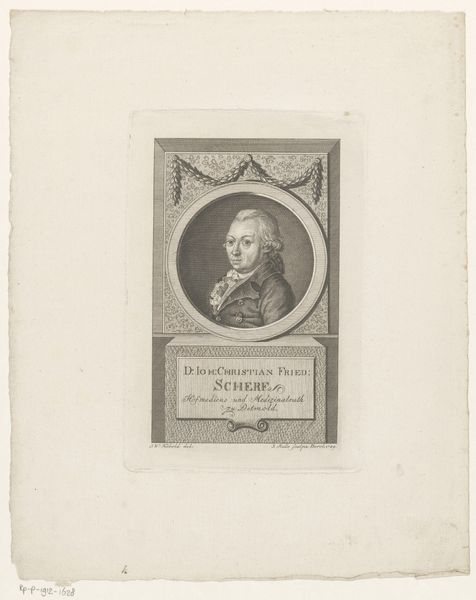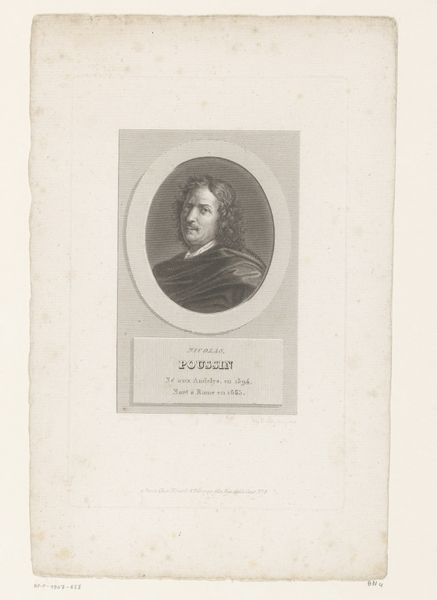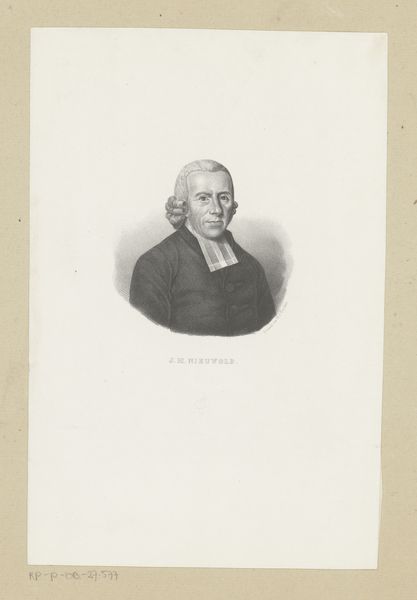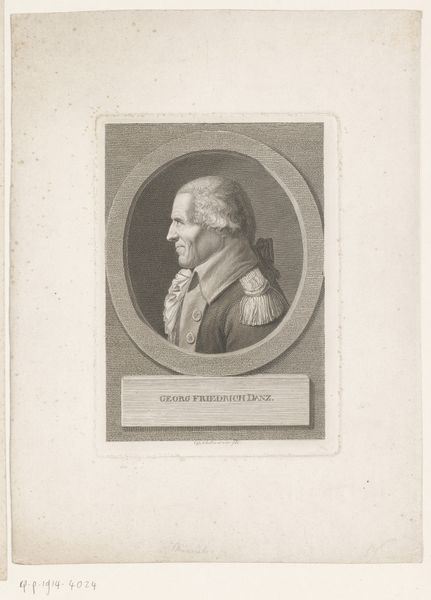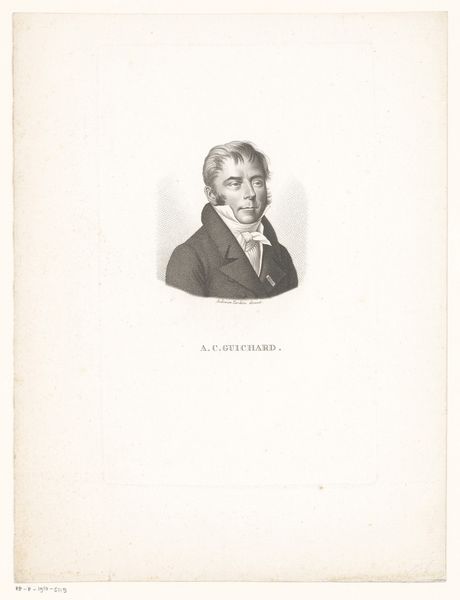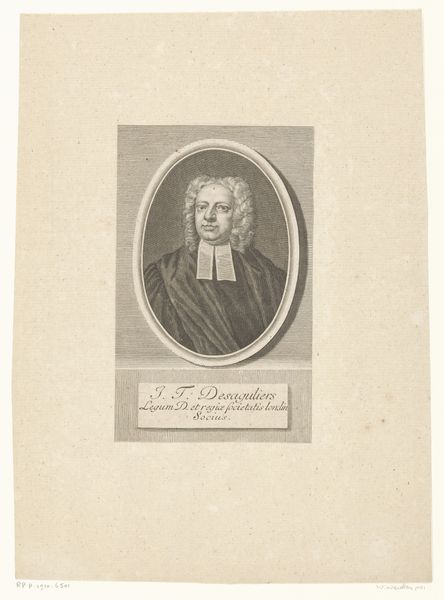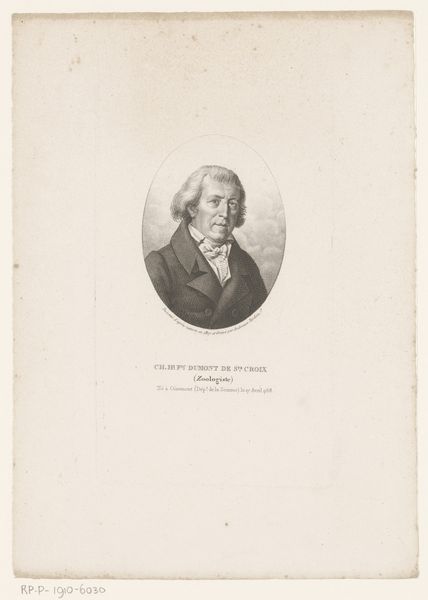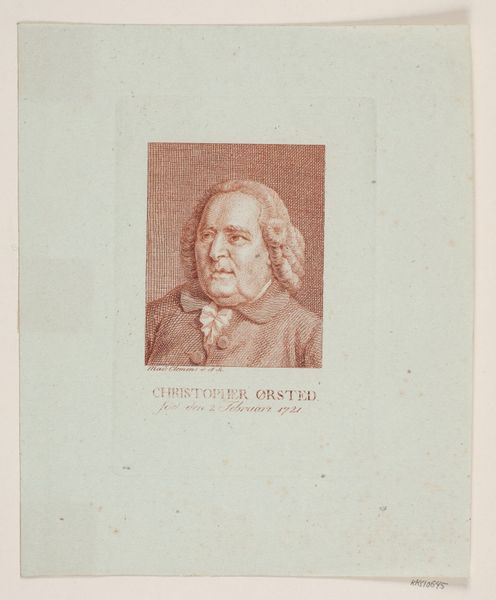
engraving
#
portrait
#
pencil drawn
#
neoclacissism
#
aged paper
#
toned paper
#
light pencil work
#
pencil sketch
#
figuration
#
line
#
history-painting
#
engraving
#
realism
Dimensions: height 181 mm, width 121 mm
Copyright: Rijks Museum: Open Domain
Curator: Here we have "Portret van Pietro Metastasio," an engraving completed sometime between 1818 and 1832 by Friedrich Wilhelm Bollinger. Editor: It strikes me as austere, perhaps even melancholic. The stark lines and limited tonal range emphasize a sense of restraint. It also looks unfinished, like a quick study. Curator: It's a compelling image because it reflects the Neoclassical interest in line and form. However, I also read his ecclesiastical garb and the overall muted quality as a marker of piety and intellectual gravitas, qualities associated with the man himself. Metastasio was, after all, a renowned poet. Editor: The framing is interesting too. The octagonal border acts like a window onto the man, creating this sense of a contained, rational world, very much in line with Neoclassical ideals. Note how the artist has carefully controlled the hatching to model the face, especially around the eyes, and given a slightly pinker hue to the lips. Curator: That's interesting. It emphasizes a focus on reason and order but also suggests a hint of emotion breaking through. Consider also that white powdered wigs, like the one he’s wearing, were common sartorial statements across the 17th and 18th centuries to show refinement and culture. They are themselves performative displays, loaded with artifice, culture, and history. Editor: The starkness of the line work against the aged paper emphasizes temporality, it’s almost as if Bollinger’s linear rendering style underscores the fragility of the human form, even that of a celebrated poet. Curator: I find that, while austere, this image also possesses a certain humanity, owing perhaps to the sitter's direct gaze. Editor: Agreed, and in that directness, Bollinger manages to create a moment of subtle beauty in simplicity, revealing an understated approach to form.
Comments
No comments
Be the first to comment and join the conversation on the ultimate creative platform.
